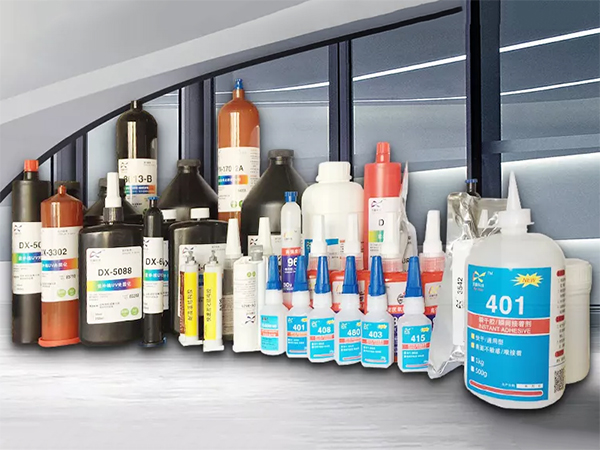The glue industry is one with multiple specialized terms. To help everyone understand the terms in the product materials, we have sorted out and summarized the following ones for your reference and learning
Glue: It is a substance that can bond two objects together and has sufficient strength at the junction. It is generally composed of base materials, curing agents or catalysts, fillers, solvents and additives.
Viscosity: The property of glue to form a considerable bonding strength immediately upon contact with the adherend and a slight pressure applied.
Adhesion: The state in which two surfaces are joined together by chemical force, physical force, or a combination of both.
Adherend: The object to be bonded or the substance to be bonded together after bonding.
Bonding: Using glue to join the surfaces of the objects to be bonded together.
Curing: The process by which glue acquires and enhances properties such as bonding strength through chemical reactions (polymerization, crosslinking, etc.).
Surface treatment: The chemical or physical treatment carried out on the surface of the adherend to make it suitable for bonding or coating.
Degreasing: Remove oil stains from the surface of the adhered objects.
Sanding: The treatment of the surface of the adhered object using sandpaper, wire brushes or other tools.
Sandblasting treatment: A process where a high-speed sand flow is sprayed out by a sandblasting machine to treat the surface of the adhered object.
Chemical treatment: The adherend is treated in solutions such as acid or alkali to activate or passivate the surface.
Anodizing: A process in which a metal surface is treated as the anode to protect it or make it suitable for bonding, and an oxide film is formed on its surface through electrochemical methods.
Curing time: The time required for the glue to harden under certain conditions such as temperature and pressure.
Adhesive joint: The part where two adjacent objects are bonded together with glue.
Storage period: The maximum storage time during which the glue can still maintain its operational performance and specified strength under specified conditions.
Solid content: The percentage of non-volatile substances in the glue measured under specified test conditions.
Durability: The ability of bonded parts to maintain their performance for a long time under usage conditions.
Bonding strength: The stress required to cause failure at the interface between the adhesive in the bonded sample and the adherend or in the adjacent area.
Shear strength: The shear force per unit bonding surface that a bonded specimen can withstand when it fails under a load parallel to the adhesive layer, expressed in MPa.
Tensile shear strength: The stress that causes the adhesive joint to fail under an axial tensile load parallel to the adhesive interface layer, expressed in MPa.
Tensile strength: The tensile force per unit bonding surface that a bonded specimen can withstand when it breaks under a load perpendicular to the adhesive layer, expressed in MPa.
Peel strength: The load that a bonded specimen can withstand per unit width when separated under specified peel conditions, expressed in kN/m.
Impact strength: The maximum work consumed per unit bonding surface of a bonded specimen when it breaks under impact load, denoted by J in physics.




